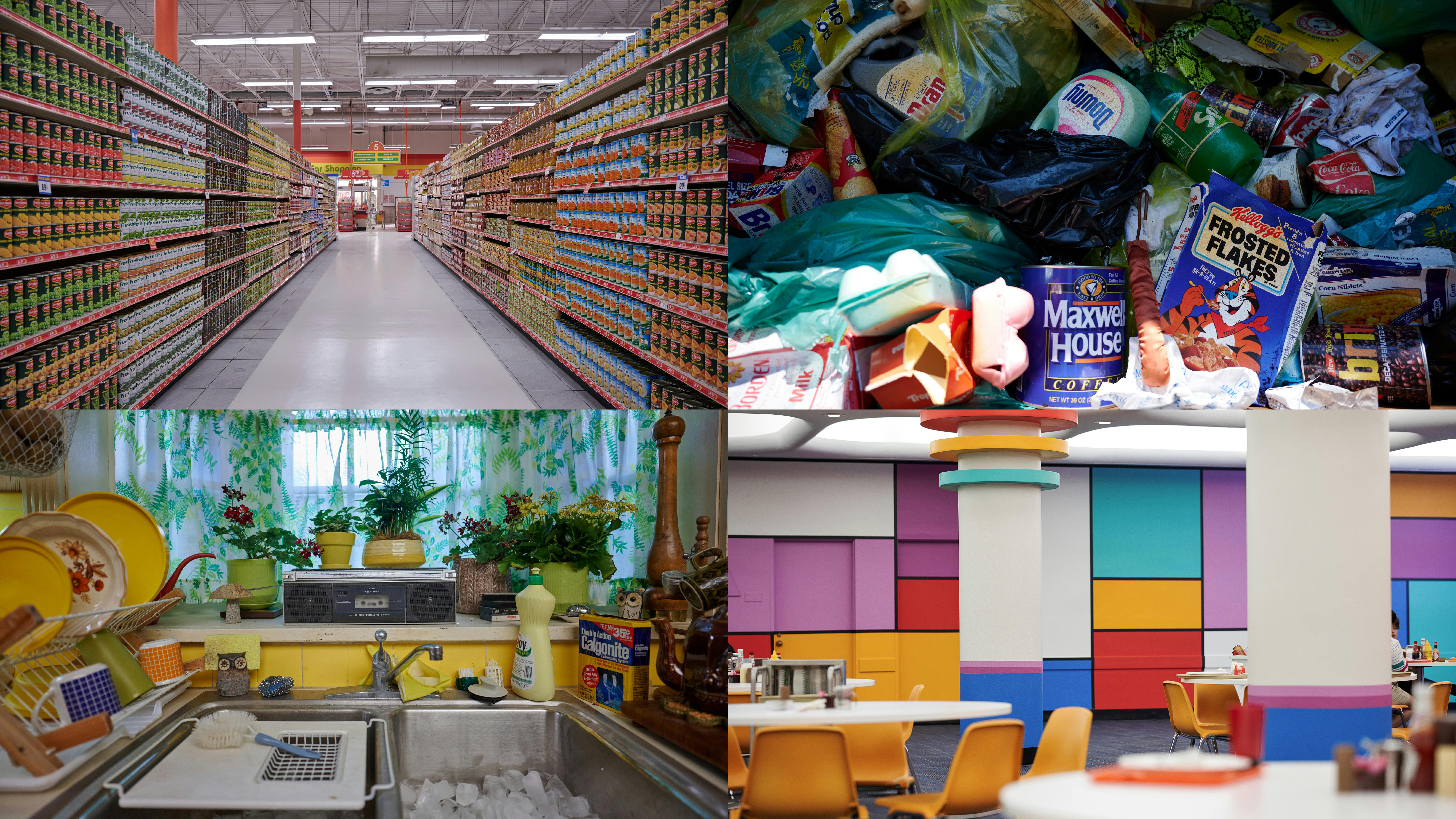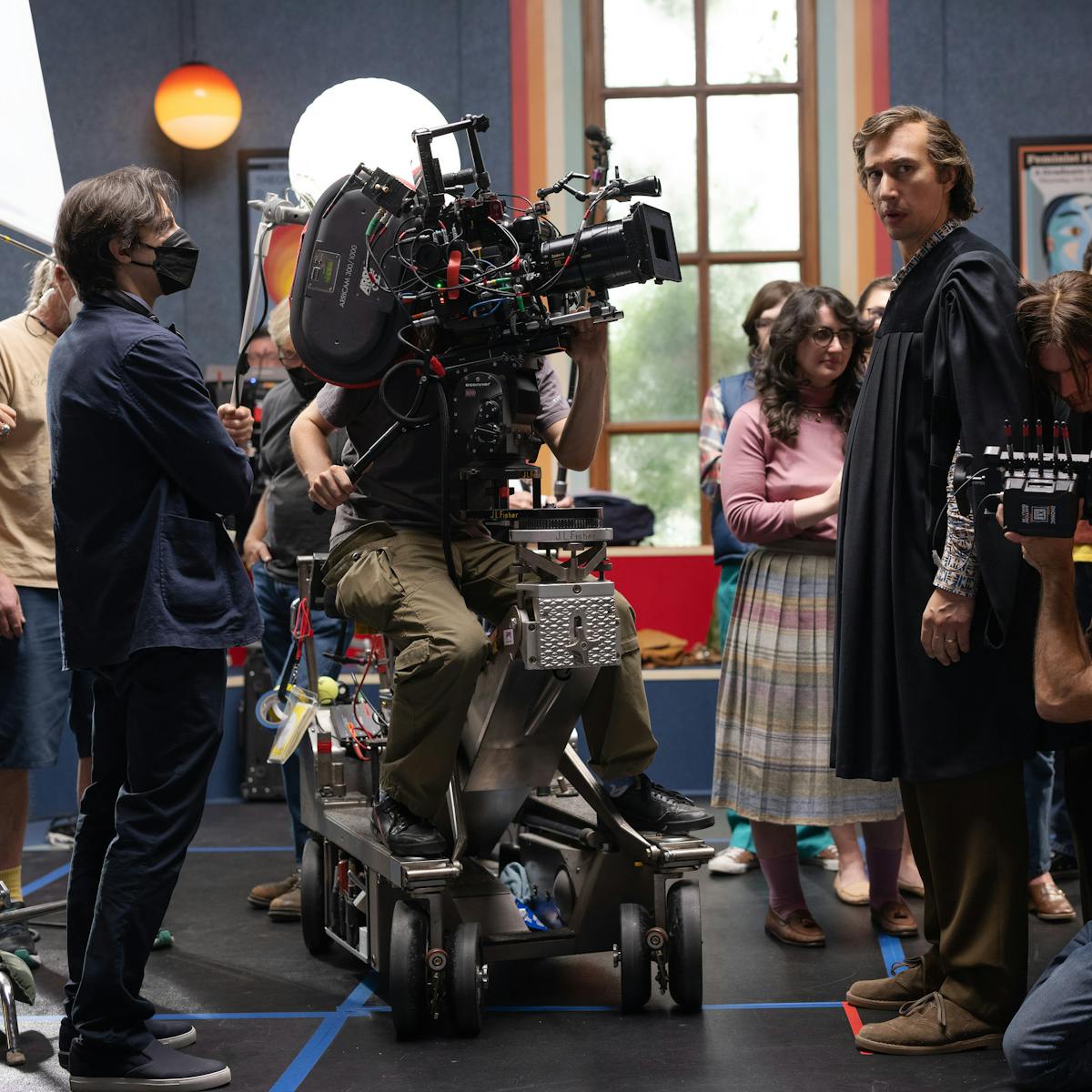A deep dive into the order and chaos of Noah Baumbach’s latest film.
When it was first published in 1985, Don DeLillo’s White Noise became a quintessential postmodern text. The novel distilled a generational concern about the overloaded state of the world, exploring consumerism, mortality, and the overwhelming power of technology through the lens of a family drama. White Noise, with its all-encompassing themes, is an enduring piece of fiction that defines not only a time in America but also the country itself. It became a touchstone for many, including filmmaker Noah Baumbach, and continues to connect with readers almost 40 years later.
Early in the pandemic, after the director had closed the book on his last film Marriage Story, Baumbach revisited the novel and was inspired to bring the world of White Noise to life onscreen. Starring Adam Driver and Greta Gerwig as married couple Jack and Babette Gladney, the film takes place in the fictional suburban town of Blacksmith, where station wagons sit securely in the driveways of modest homes with manicured lawns.
Jack (or J.A.K. as he refers to himself in distinguished company) is a respected academic, the leading scholar in the field of Hitler Studies, at the bucolic College-on-the-Hill, where he debates and consults with his esteemed colleagues. There’s Elliot Lasher (André L. Benjamin), neurochemist Winnie Richards (Jodie Turner-Smith), and Murray Siskind (Don Cheadle), the most recent addition to their troupe. Both Jack and Babette are obsessed with death, a fear that only becomes more extreme when an apocalyptic disaster looms over the Gladney family. Created by human error, the Airborne Toxic Event forces Jack and Babette to confront their own anxieties and awakens a primal urge to protect their blended family.
Meticulously imagined by DeLillo, the world of White Noise proved ripe for exploration by the filmmaker and his cadre of creatives. Here is a closer look at how the venerable collaborators brought Baumbach’s dark comedy to life.
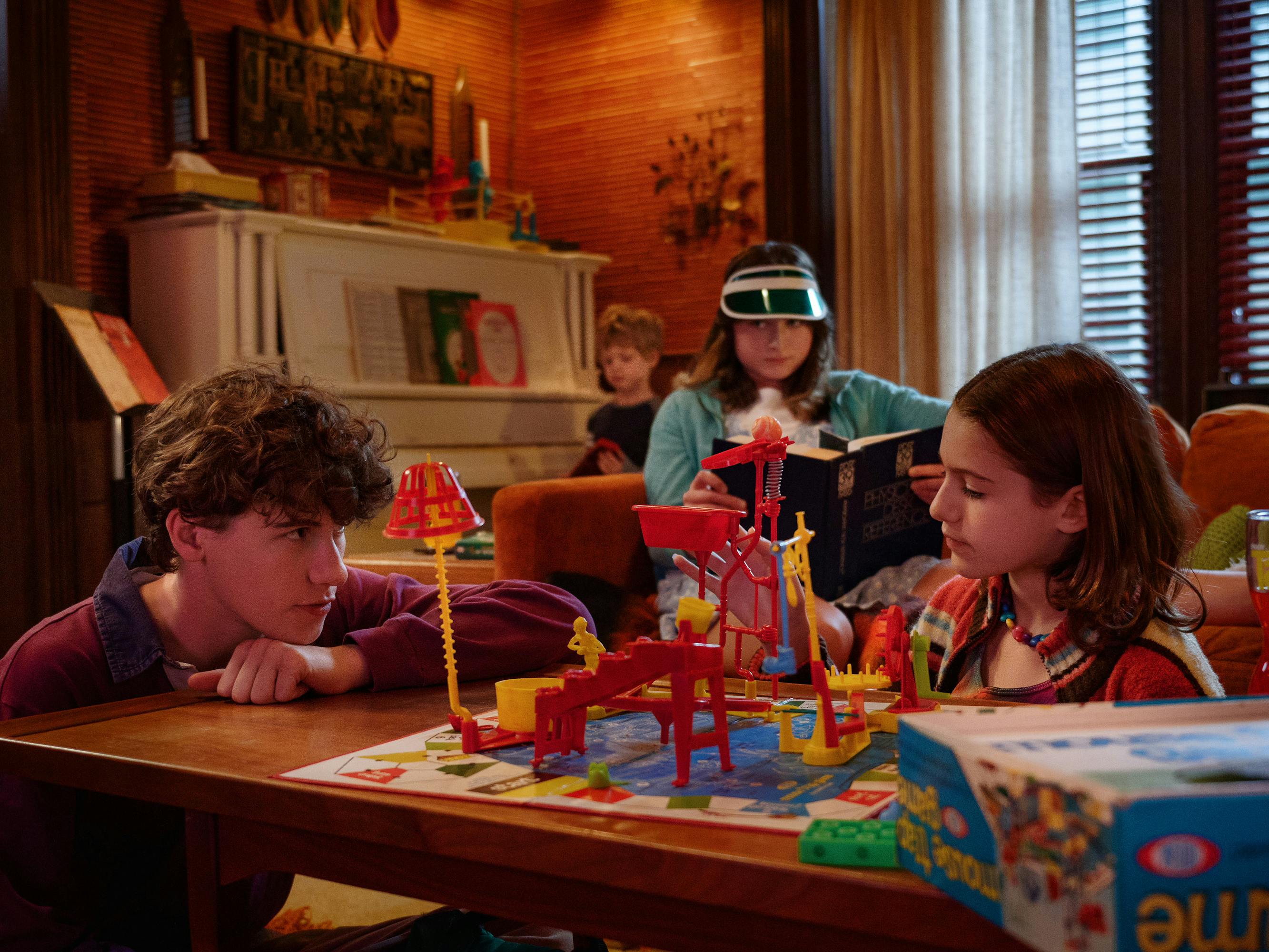
Heinrich (Sam Nivola), Wilder (Henry/Dean Moore), Denise (Raffey Cassidy), and Steffie (May Nivola)
GROWING UP GLADNEY
In the initial New York Times review of the novel by Jayne Anne Phillips, DeLillo is quoted as saying that the Gladney children are “a form of magic,” and that, “The adults are mystified by all the data that flows through their lives, but the children carry the data and absorb it most deeply. They give family life a buzz and hum.” Jack and Babette, each other’s fourth marriage, have four kids between them; Heinrich (Sam Nivola), Jack’s eldest child with his first wife; Denise (Raffey Cassidy), Babette’s with her second husband; Steffie (May Nivola), the offspring of Jack and his third; and Wilder, Jack and Babette’s teetering toddler. Denise, beloved visor in tow, is more observant than her mother thinks as she takes notice of the pill bottles Babette has started hiding in radiators and trash compactors. Heinrich exudes an unexpected confidence in the face of crisis, guiding his parents and bystanders alike through the emergency at the center of the film. Steffie is the inquisitive and sensitive middle child, who sometimes gets called “Denise” by her stepmother.
They ping-pong around the Gladney home, sharing the facts of the day and asking big questions: Should we be scared? Do sheep have eyelashes? The young actors’ chemistry radiates from the screen, aided by Sam and May Nivola’s being off-screen siblings as well. Their characters are more honest than their parents, who struggle in the face of everyday chaos and the nightmare of disaster.
While the Gladney children are the products of the 1980s, their anxieties and quirks feel contemporary (pointing out that their mother’s choice of gum causes cancer, that smoking kills, that the use of substances to help one relax is dangerous). They provide a coordinated hum that surrounds the Gladney clan as they make their way through the world. “Family is the cradle of the world’s misinformation,” Murray states, and the kids are just reacting to the uncertainty of everyday life.
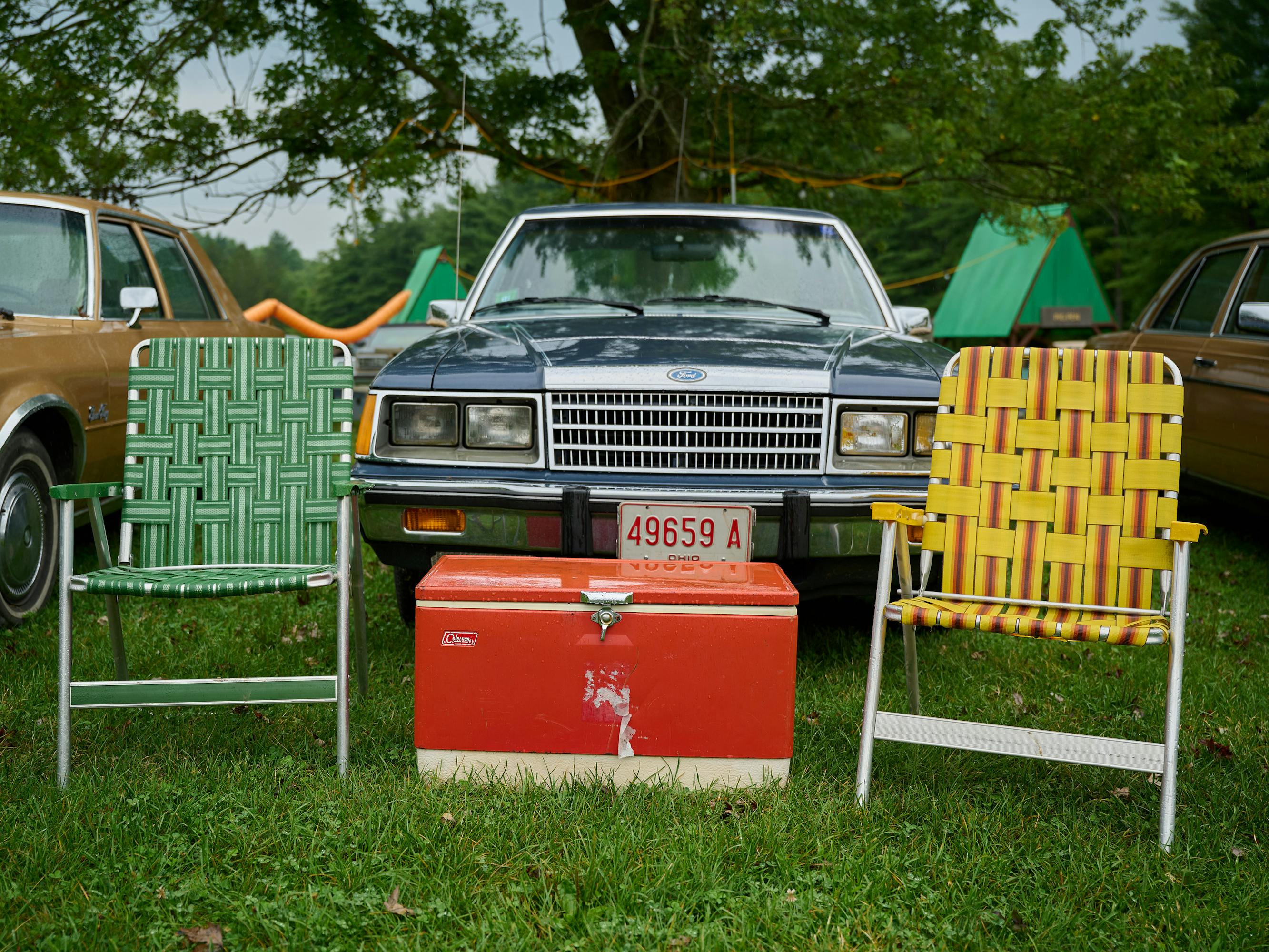
Welcome to Blacksmith
DeLillo initially imagined Blacksmith as a suburb of Iron City, a buzzing metropolis. To fashion this familiar “everytown,” Baumbach turned to production designer Jess Gonchor, known for his collaborations with the Coen Brothers on films like True Grit and Hail, Caesar! “It’s 1985, but it’s not like the 80s in New York City with St. Marks Place and the new wave and punk era,” says Gonchor. Tasked with designing the town’s grocery store, where every character feels safe; the College-on-the-Hill, the bastion of academic establishment; and the overstuffed Victorian that the Gladneys call home, Gonchor and Baumbach jointly decided to embrace a maximalist approach and a color palette inspired by a Rubik’s cube. “In the book, it says [their house] is basically like a storage unit for their lives, so we tried to just put as much as we could possibly put in there.” Gonchor says of the Gladney residence. “It’s like organized clutter.”
Frames are bursting with intimate details and objects, there’s a half-completed puzzle on the kitchen counter, mismatched dishware, perhaps the product of seven different marriages, a weathered upright piano waiting to be played on holidays. Their home is a melting pot of varying consumer habits, and the production design illustrates their familial freneticism, embraced as the new normal in a decade of decadence.
Outside, the Gladneys spend the most time at the local A&P Food Store, which serves as the unofficial town square, where commerce and community meet. Gonchor and the production design team built the painstakingly period-accurate supermarket in an abandoned big-box store. Set decorator Claire Kaufman ensured that each item lining the shelves and produce aisles of the store could truly be found almost 40 years ago. “Even with the candy, we reprinted almost every single package and wrapped them ourselves,” Kaufman says. “Otherwise, it didn’t look right.”
The A&P ultimately housed around 6,700 linear feet of consumer product and paraphernalia, including 500 custom cereal boxes, 2,000 soda cans, 5,000 bags of potato chips and more. Gonchor points out that the supermarket functions as “the melting pot of the ‘white noise’ and how everybody is being persuaded by consumers and product.” Throughout the other locations in the film, items from the store can be spotted: a box of Tide in the Gladneys’ garage, a jar of mustard on the cafeteria table where the academics debate, a Bubble Up soda crate being reused as a storage box on college move-in day.
Visually, the A&P supermarket and the Gladney home are in conversation with one another, as symbols of rampant, unquestioned consumption: If the home showcases who they are, the A&P represents who they want to be. The children notice that Babette keeps buying healthy foods that she doesn’t eat, but one day, when she does eat them, she’ll become a better person. Purchasing power becomes a means for self-improvement.
Dressing the Chaos
Like the dialogue between character and location, costuming became another way to define character in an era when, more than ever before, consumption was a means of self-expression. Legendary costume designer Ann Roth, who previously worked with Baumbach on Margot at the Wedding and While We’re Young, was tasked with outfitting the varied cast of characters. Roth designed costumes for many of the iconic films of the period, including Working Girl, Silkwood, and 9 to 5, which provided a sense of kismet for Baumbach as he began thinking about his own ode to the 80s. Roth worked extensively with the ensemble to shape their characters. When trying on the right leather jacket or Minnie Mouse sweatshirt, “the actor then sees himself sort of evaporating and sees another person there,” Roth explains. “That’s what you’re aiming for. That’s the secret of it.”
Hair and makeup also helped the actors transform — Babette’s permed hairstyle (“Your wife has important hair,” exclaims Murray to Jack upon first seeing her) allowed Gerwig to discover the character. “When we put that wig on her, she didn’t see Greta in the mirror anymore,” Roth says. “The mirror encouraged us to keep going.”
Everyone in the film, from the stars to the supporting players, needed to look period correct on camera. “It takes a very, very large village, and a large stock of wigs, and a large team of really talented stylists that are willing to come in and just, day after day, create 1985,” says hair department head Therese Ducey, who explains that the team had to have an extra 50 to 60 wigs on hand for the extras who played the citizens of Blacksmith.
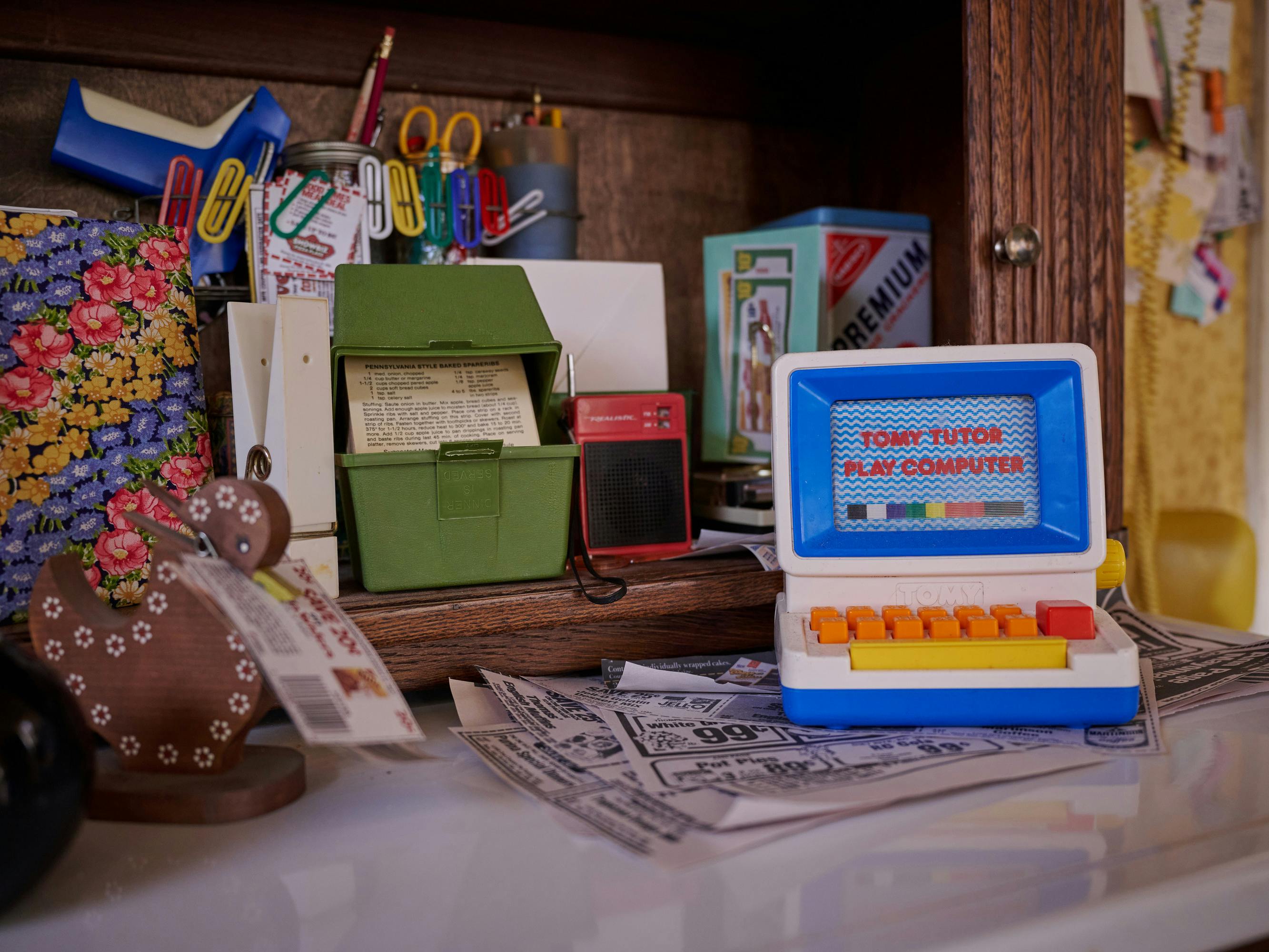
Making Noise
Echoing the visual cacophony of the supermarket, Baumbach and sound mixers Lisa Piñero and Chris Scarabosio played with a variety of sounds, from passing conversations of extras to the rumble of a refrigerator to the crackle of a television, creating an aural experience that feels heightened yet quotidian, much like DeLillo’s novel itself.
Danny Elfman, a product of the New Wave era who broke out with his band Oingo Boingo in the early 80s and has since gone on to become one of Hollywood’s most sought-after composers and a four-time Oscar nominee, came on board to compose the score. With his diverse body of work, from Pee-wee’s Big Adventure to Silver Linings Playbook, Elfman was the perfect fit for the unique tone of White Noise. “That’s what immediately attracted me to this film,” he says. “I knew it was a constant tightrope walk between real emotions and more surreal elements, between dark humor, a seedy element, and a genuine romance.”
“Noah and Matt [Hannam, the film’s editor] would take tracks that I would send them as ideas and cut them up and attach them to the most curious places that I might not have thought of,” Elfman continues. “It was a very loose and open approach, which I really loved.” White Noise also features the first new song in five years from LCD Soundsystem, a track titled “New Body Rhumba.” The band’s frontman James Murphy is a frequent collaborator of Baumbach’s, having previously composed the scores for Greenberg and While We’re Young. The upbeat-yet-melancholic song is the soundtrack to the film’s unexpected and joyous finale dance number.
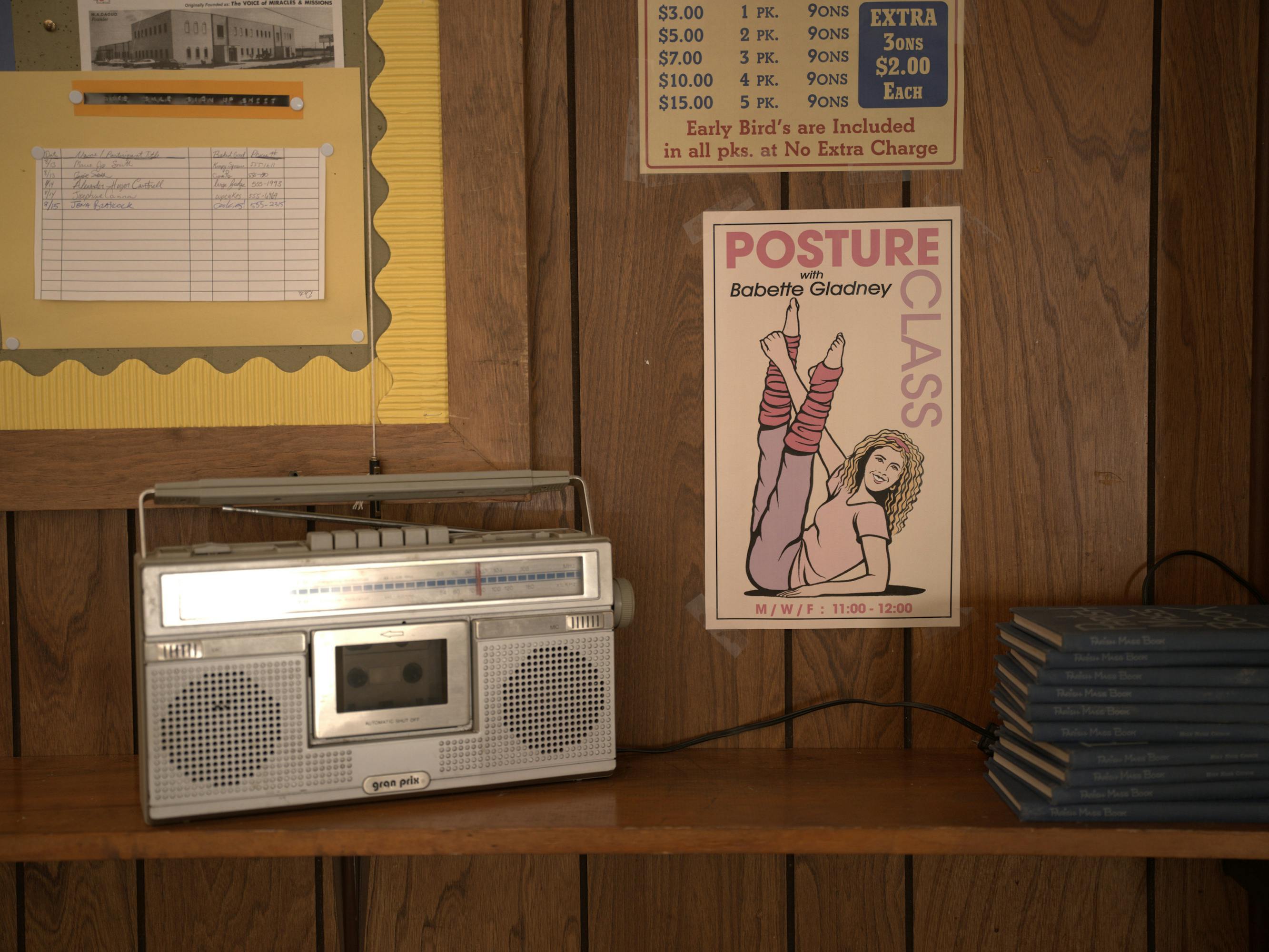
The Power of Movement
White Noise also reunites Baumbach with choreographer David Neumann, who previously collaborated with the filmmaker on Marriage Story. The pair bonded over the idea of using movement as an extension of character and storytelling. Coincidentally, Neumann had considered adapting DeLillo’s work for a theater piece years before Baumbach approached him for the project. “It was one of those formative novels,” Neumann says. “I found it really exciting. It spoke to me in terms of how we process information, the way that the advertising world of our culture infiltrated our thoughts.”
Baumbach and Neumann worked together to choreograph many of the scenes in White Noise, from family dinners to academic lectures. They wanted to bring to the film a sense of heightened naturalism that would match the tone of the source material. “The main thing was that I wanted to keep the movement grounded in what the actors instinctively were doing,” Neumann says.
For the film’s choreographed epilogue, Neumann visited several grocery stores to study the behavior of the shoppers. “Every single person in the supermarket, unless they were with someone else, they were entirely in their own bubble,” he says. “I found that very moving.”
The finale features around 160 dancers — in addition to the starry ensemble — and utilizes a variety of choreographic styles. Neumann wanted to stay away from specific dances synonymous with the 80s so the movement could “speak to something more existential and absurd, reflecting the spirit of the novel.” The shoppers have their own identity, which comes out in their choreography. “I think there’s something very positive when a bunch of people start doing movement together,” says Neumann. Baumbach’s finale becomes a celebration of life and death, an acceptance of them coexisting, and is filled with a sense of optimism that in spite of it all, life goes on, and we continue checking items off of our grocery lists.
